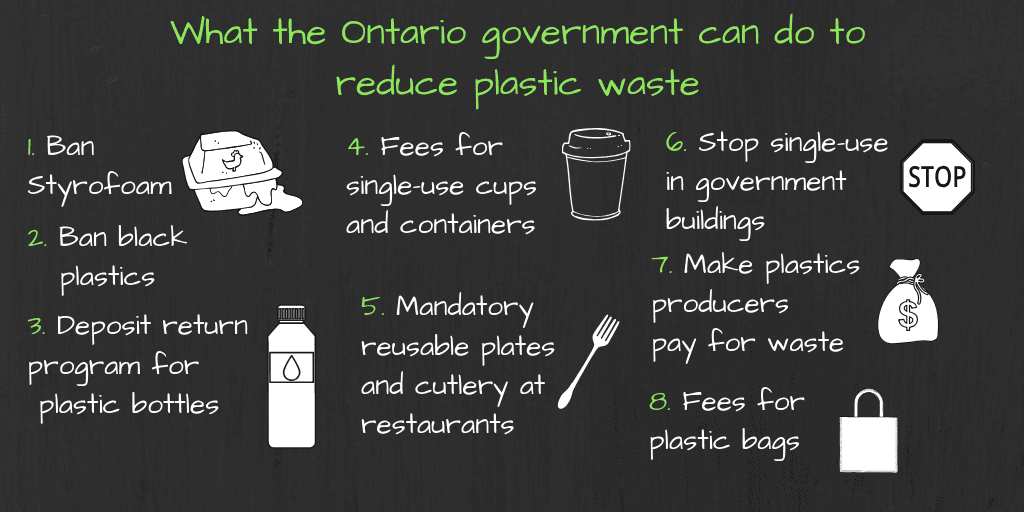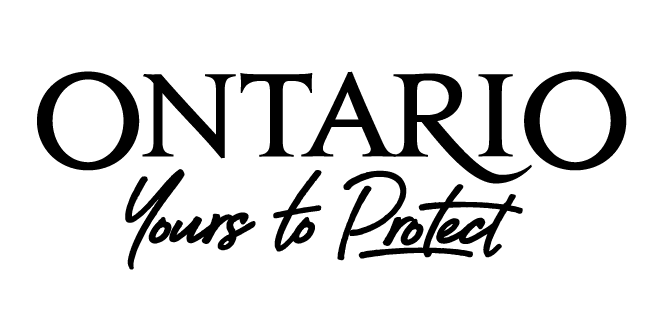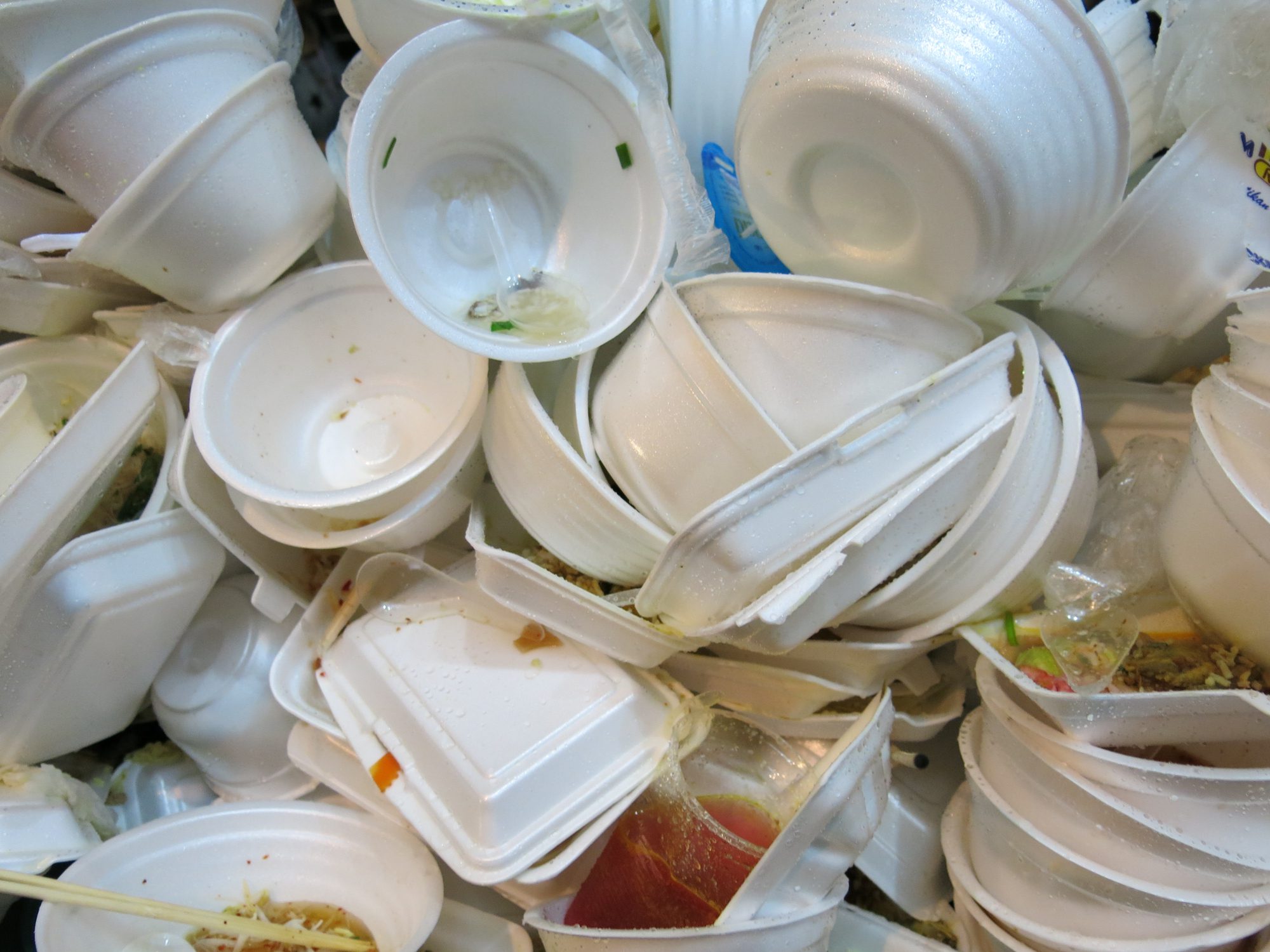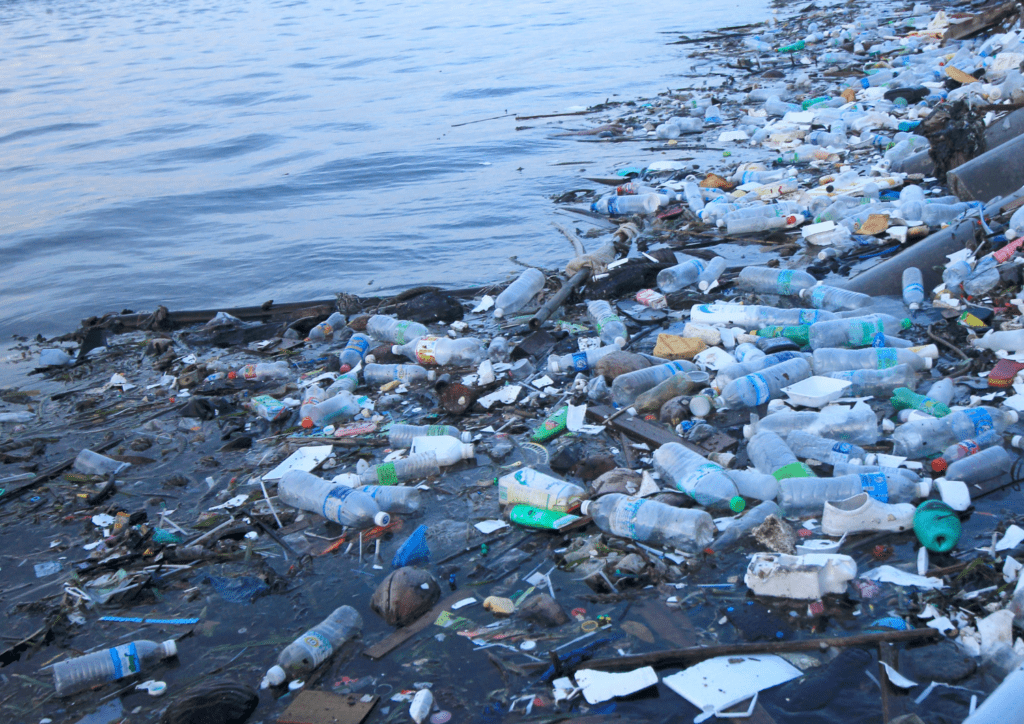When it comes to stopping plastic pollution, there’s so much onus on consumers to change their habits. But did you know that the best way to reduce plastic waste is through government action?
Here’s a list of 8 things Ontario can do to reduce plastic waste:

1. Ban Styrofoam
Foam plastics, like Styrofoam, are among the litter most commonly found in cleanups. They are used to make things like disposable cups, plates, take-out containers, and packing peanuts. Styrofoam can only be recycled if it is clean, un-dyed, and uncontaminated. But because Styrofoam often holds food, it seldom meets those conditions.
2. Ban black plastics
Black plastic is often used for take-out containers and in grocery stores to package meat, fish and vegetables. It can’t be recycled. No Blue Box accepts black plastic in Ontario. So, all of this plastic goes to landfill, where it stays forever. Black plastics are recyclable in theory. However, because they’re the same colour as the conveyor belts in the recycling facilities, sorting machines aren’t able to detect them.
3. Bring back your plastic bottles for cash
Ontario is one of only two provinces in Canada without a deposit return program for plastic bottles. Every year, 1.5 billion bottles end up in the province’s landfills or the environment. A deposit return program would help recover over 90 per cent of the plastic bottles sold annually.
4. Fees on single-use cups and containers
Coffee cups cannot be recycled and end up in landfills and the environment. A fee on disposable cups would encourage people to use reusable cups and finance innovative reusable solutions.
5. Mandatory reusable plates, cups, and cutlery at restaurants
Reducing and reusing are the best ways of stopping waste and pollution. The Ontario government can make it mandatory for restaurants to offer reusable plates, cups and cutlery for on-site consumption (like what two Toronto city councillors are calling for). Coffee tastes better in a ceramic mug, while drinking it at your favourite coffee shop.
6. Eliminate the use of single-use items in government buildings
The federal government has committed to eliminating the use of unnecessary single-use plastics in government buildings and operations. Ontario can do the same and set an example for eliminating throw-away plastics.
7. Make producers of plastics pay for the waste
Right now, producers can sell as much plastic packaging as they want and make citizens pay to manage that waste. About 40 per cent of plastics produced every year are for packaging and single-use items. Making producers be responsible for collecting and managing the waste they cause would make them think twice before selling their products in non-recyclable plastics, like stand-up pouches, Styrofoam, black plastics, and cling film.
8. Fees on plastic bags
When Ireland introduced a 15 eurocents fee ($ 0.22 CAD), it led to a 90 per cent decrease in the use of single-use plastic bags. The Ontario government can impose a fee on plastic bags, reduce plastic pollution, and use that money for environmental cleanups. Of course a straight-up ban would also work, as many countries in the world have found.









